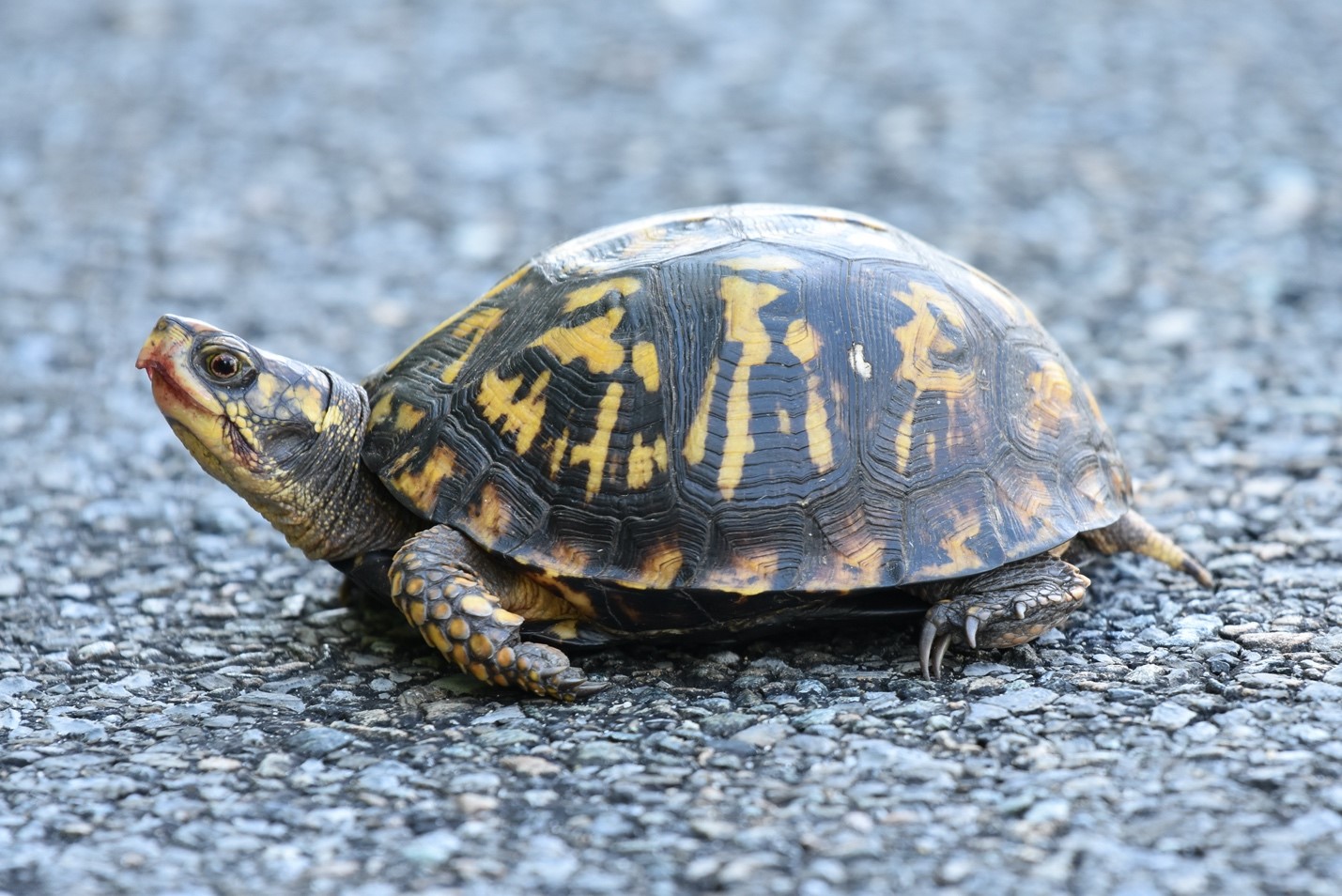

decaying leaves, and other plant debris, venturing out only during early morning or evening. During the heat of summer, this extremely gentle animal spends the day hidden beneath rotting logs. Habitat & Behaviorįound in woodlands throughout Ohio, the box turtle is our most terrestrial turtle. In the wild, warmer eggs at the top of a nest may all hatch out as females, while cooler eggs at the bottom hatch out as males.įor the Eastern box turtle, incubation of the 3-8 eggs usually lasts 3 months, but varies depending on soil temperature and moisture. With the exception of softshell turtles, the sex of all species of Ohio turtles is dependent on the temperature at which the eggs develop. The reproductive biology of turtles is fascinating. The plastron is hinged, allowing the turtle to lift it like a drawbridge to close with the. The plastron (bottom shell) is tan to black with radiating markings.

Males usually have red eyes and a longer tail than females. The eastern box turtle ( Terrapene carolina) has a high domed carapace (upper shell) that is brown to black with yellow to orange blotches and is less than 20 centimetres long. Usually it is dark brown or black, accented with some combination of yellow streaks or blotches. The high-domed carapace of the box turtle may carry a wide variety of markings.
#Eastern box turtle driver
The greatest threat to Ohio's box turtles is the thoughtless driver who makes no attempt to avoid running over them as they lumber across the highway.ĭownload Ohio Wildlife Field Guides Description This "boxes in" the turtle for protection. The box turtle ( Terrapene carolina) gets its name from its centrally hinged plastron (lower shell), which enables both front and rear portions of the plastron to be drawn up tightly against the carapace (upper shell). Fall 2022 DNAP eNews - Prairie Restoration.Berry shrubs such as strawberries, blackberries, and huckleberries provide a food source for the Turtles as well as the shading that they need.īoth indoor and outdoor habitats can be furnished with bracken fern, carpet moss, lichens, oak, and cedar logs, as well as floating plants like bladderworts and duckweed. In outdoor enclosures, thick prairie grasses and low-lying shrubs provide shade and shelter to hide in. Moisture-retaining mosses such as Peat moss create a great swamp environment, especially when paired with moist soil covered in oak or sassafrass leaves. Their habitats should have both terrestrial and aquatic plants. However, they do not like direct light so will need shading too. They will want to crawl up on stones and logs to sit under the light and warm themselves up. They are cold-blooded and cannot regulate their body temperature internally, so must move to sunny and warm spots in order to warm up.Īll Turtle tanks require an incandescent heat lamp or UVB lamp for basking. Turtles that live outdoor can be moved to an indoor enclosure/tank during the winter. They can travel up to 50 meters in one day. These Turtles go against the stereotype that they are slow and sluggish.Įastern Box Turtles are very active and energetic if they have the space to move. They have an internal homing ability, which allows them to find their way home no matter how far away they are! It’s thought they receive information from the Earth’s magnetic field.Box Turtles enjoy cooked chicken and bananas, but these should only be given as an occasional treat.You can tell how old they are by counting the rings on their shell.They are the only Turtles that are able to do this.

#Eastern box turtle free
Make sure that the shell is well-formed and free of cracks or dents.


 0 kommentar(er)
0 kommentar(er)
